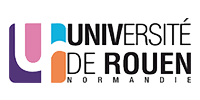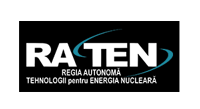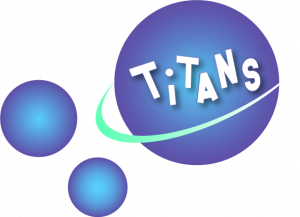TRANSAT to improve knowledge on Tritium…
Launched in September 2017, the European Horizon 2020 TRANSAT (TRANSversal Actions for Tritium) project lasted a total of 54 months with a total budget of nearly €4 million. Coordinated by CEA, it gathered 18 partners from 8 European countries: 12 research organisations (CEA, CIEMAT, DH PHE, ENEA, IFIN HH, IIT, INFPR, IRSN, JSI, KIT, SCK-CEN, UKAEA), 4 universities (AMU, CORIA/URN, UNIPV, UOP), 1 private company (RATEN) and 1 SME (LGI).
Over the course of four and a half years, this mudisciplinary project contributed to improving the knowledge on tritium management in fission and fusion facilities. It aimed to address the challenges related to tritium release mitigation strategies and waste management improvement, and refine knowledge in the fields of radiotoxicity, radiobiology, and dosimetry.
3 SPECIFIC OBJECTIVES TO REACH
The project’s outcome is expected to bring new technical knowledge to the fission & fusion community and contribute to building a solid legal, standards, financial framework for dealing with Tritium.
In general, tritium sources are limited and kept as low as reasonable during the conception phase of a reactor. The amount of boron and lithium, which form the tritium source produced by their interaction with neutrons, is limited in fission reactors to the lowest level possible.
Identically, the fusion community is continuously improving the fusion burnup and tritium breeding system to decrease the tritium recirculation and consequently its absorption by vessel walls or the tritium plant. However, it is not possible to go under a certain limit due to operational constraints or safety reasons, so it is necessary to work on tritium capture and permeation limitation between and through the circuits.
For these reasons, TRANSAT will focus on the technologies needed to reduce this tritium permeation between and through circuits through, for example, the development of new materials with reduced tritium diffusion capability or in situ operational effluents treatment. Furthermore, to ease the tritium permeation mitigation strategy during the conceptual phase of reactors or devices, modelling tools for tritium inventory and tritium permeation fluxes estimation in fusion and fission devices will be compared and benchmarked to improve the level of confidence in their estimation. In addition, technological solutions for the development of on-request tritium production systems will be evaluated.
Another important cross-cutting issue concerns tritiated waste management. Indeed, tritium, as an isotope of hydrogen, has the property to be easily absorbed in any material. This leads to tritium release which intensity and kinetic with time is related to the tritium inventory and its profile in the batch under consideration. As a result of which, the storage strategy of tritium-contaminated waste is complex and directly related to different critical issues:
- The measurement of the tritium in the sample and not only on the surface. Non-destructive techniques have a too weak precision and destructive methods are based on sampling strategy that is not satisfying due to possible inhomogeneity. Both of them are not related to tritium profile measurement in the material and innovative measurements will be developed to assess both tritium inventory and profile.
- In the case of tritium release above the acceptance criteria of the storage facility, different strategies can be considered to its mitigation: tritiated waste treatment (thermal treatment, incineration …), improved confining drum and confining matrices. These methods can be either combined or used separately. In the framework of waste management strategy and considering the fact that detritiation processes are already covered by H2020/ Power Plant Physics & Technology program (WP Safety and Environment), this project will focus on improving new concepts for confining drums.
In parallel to the first two main objectives, investigations are proposed to improve knowledge in the field of radiobiology, dosimetry, radiotoxicology, genotoxicology and ecotoxicology and environmental fate in case of contamination by tritiated products.
In the nuclear field, tritium can be released into the atmosphere as tritium gas or tritiated water. Some of the tritium release can then be transformed in organically bound tritium (OBT). The radiotoxicological consequences of a contamination by tritiated water or organically bound tritium in animals or cells have been identified during experiments only at high tritium concentrations.
Moreover, epidemiological studies showed that doses related to tritium were not specifically assessed in workers exposed to tritium, among other exposures. Consequently, these studies provided a poor indication of the health risks associated with tritium exposure.
During the decommissioning of nuclear facilities, operations are intended to remove or eliminate any tritiated material. These operations generate fine airborne dust, namely aerosols. It is proposed here to study the consequence of a release of such tritiated particles in terms of radiotoxicology and ecotoxicology. The crosscutting materials will be stainless steel, cement and aluminum. The outcomes foreseen in this project will help radiation protection authorities, IAEA and other nuclear safety advisory organisms to assess more precisely the radiobiology, dosimetry, genotoxicology and ecotoxicology of tritiated micron and sub-microns particles.
The Tritium challenge…
Tritium (3H) is a radioactive isotope of hydrogen with a physical half-life of 12.3 years. The nucleus of tritium, sometimes called a triton, contains one proton and two neutrons. It is a beta emitter (electron emission with a range of energies up to a maximum energy of 18.6 keV and mean energy of 5.7 keV).
There are two main sources of Tritium:
- Natural source formed by the interaction of the atmosphere with cosmic rays
- Non-natural source:
- Mainly ternary fission and reaction with 10 Boron and 6 lithium in nuclear fission reactors (worldwide tritium release of nearly 35 g/year)
- Nuclear fuel reprocessing plants (annual tritium release of 35 g/year)
- Nuclear weapons manufacturing and former tests (nearly 47 kg in 2016)
- Accelerators by bombarding 3He with neutrons
- Radionuclide labelled materials for application in medicine
- Fusion reactors studies (for ITER, the maximum inventory on site will be 4 kg and the maximum
- Tritium release 900 TBq/year during maintenance years and 200 TBq/year during operation).
Tritium is very mobile. It is mainly released as tritiated water and hydrogen isotopes into the environment directly from the sources above or from tritiated waste storage and treatment, which has led to environmental and health issues.
According to Deuterium-Tritium fusion reactor development studies, new fuel management (especially for GEN IV reactors) and conception choices (B4C as structure material for fast breeder reactors), the amount of tritium released into the environment is expected to increase. These additional releases combined with the pressure from authorities and the public has led to the need for new tritium release impact mitigation strategies as well as a better understanding of the impact of tritium on human health and the environment.



















